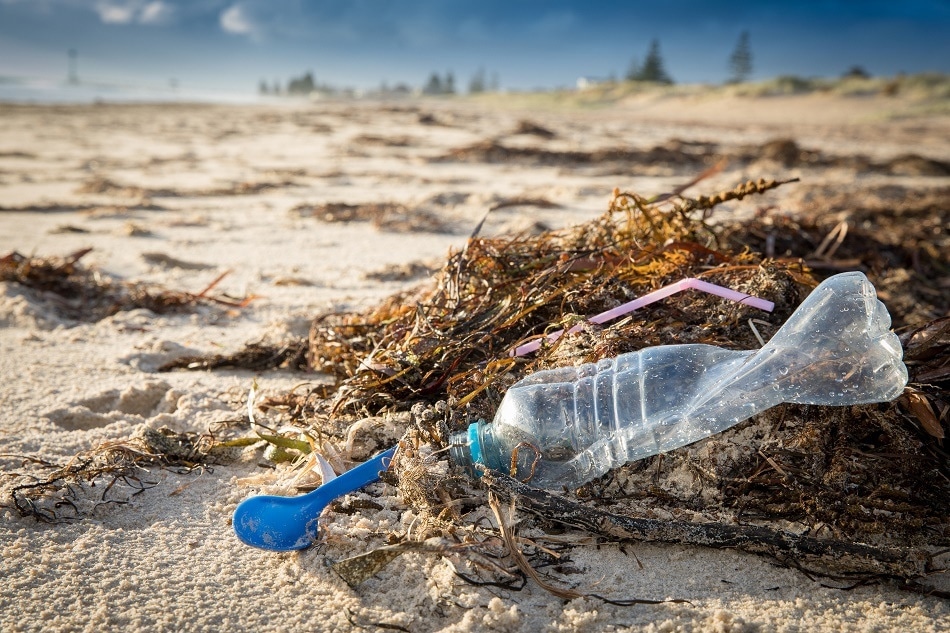
Image Credits: MPIX/shutterstock.com
The importance of changing our habits regarding plastic consumption is not a hard-sell: 9.2 billion tonnes of plastic have been produced in the last 70 years, of which 6.9 billion tonnes is waste.[1] Of that waste, about a tenth has been recycled and another tenth incinerated, the rest of it remaining in landfills or in our environment.[2] And, of course, remain it shall: estimates say that it will take, at a minimum, 450 years for plastic to fully biodegrade. It may also never happen.[3]
Australia is of particular interest when it comes to recycling plastic and lowering emissions, given its expanse of wilderness and huge coastline. A recent publication from Ocean Crusaders illustrates the situation: Australia consumes 6.9 billion plastic bags per annum, more than half of which are shopping bags. Only 10% of Australians recycle plastic bags, and less than 1% of these plastic bags are reused.[4] Notably, this study only looked at bags. Overall, Australia only recycles 12% of its plastic—the rest is dumped in landfills.[5]
It is certainly an uphill battle—not only in Australia—requiring massive changes in public behavour, large-scale initiatives, and clever inventions. So, what’s the story Down Under?
2025 National Packaging Targets
A new initiative from the Australian Government came last year, in the release of four packaging targets for 2025. Created by environment ministers at both Federal and State levels, who collaborated with industry representatives, the four goals are:
- 100% of all Australia’s packaging will be reusable, recyclable, or compostable by 2025 or earlier.
- 70% of Australia’s plastic packaging will be recycled or composted by 2025.
- 30% average recycled content will be included across all packaging by 2025.
- Problematic and unnecessary single-use plastic packaging will be phased out through design, innovation, or the introduction of alternatives.[6]
In response, Boomerang Alliance—an alliance of 49 environmental groups at local, state, and national levels—lauded the desire to act, but questioned whether the goals were ambitious enough. Particularly, the group pointed out that the third goal would not, even if met by 2025, completely close the loop on plastic usage.[7]
China’s Export Ban on Recyclables
In 2018, China announced that it would no longer buy “dirty” recycling materials, in other words, recyclables that are contaminated or of mixed materials. This has sparked crises in many countries, including Australia, where it had been the practice for council governments to sell kerbside recycling to companies that would, in turn, sell them again—often to China.[8] Without this important buyer, an immediate economic incentive emerged to minimize plastic use and to find new ways to reuse it.
Government Steps, Industry Steps
In the context of rising pressures and China’s ban, actions are being taken on several levels.
South Australia, for instance, has recently become the first state to ban certain plastic items. The government announced on July 2019 that single-use plastics, specifically straws, cutlery, and stirrers, would be banned (pending parliamentary approval), with a possible and eventual widening of the scope to coffee cups and bags. In South Australia alone, it’s estimated that around 255 million straws and 210 million disposable coffee cups are used every year.[9]
Even bigger, in August 2019 the Australian Government announced that it was working towards a total ban on recyclable waste exports. Prime Minister Scott Morrison has stated, ‘It’s our waste, it’s our responsibility.’ Indeed, such a ban would have huge consequences, given that the country exported 4.5 million tonnes of waste overseas last year, costing nearly $3 billion.[10]
Australia’s Waste Management Review has also recently published an article about Reconophalt, a substance made from soft plastics, glass, toner, and reclaimed road. It is a type of asphalt, used as pavement—a two-lane road made from Reconophalt has, in each kilometr=er, the equivalent of 168,000 glass bottles, 530,000 plastic bags, and 12,500 ink toner cartridges. These roads are the first of their kind.[11]
Another exciting development is the ‘microfactory’, an invention from the University of New South Wales. Microfactories are built to convert recycled materials into building products, such as glass panels, plastic filament, and metal alloys.[12]
References and Further Reading
- https://www.nationalgeographic.com/magazine/2018/06/plastic-planet-waste-pollution-trash-crisis/
- https://advances.sciencemag.org/content/3/7/e1700782.full
- https://www.nationalgeographic.com/magazine/2018/06/plastic-planet-waste-pollution-trash-crisis/
- https://www.abc.net.au/news/2019-08-09/coag-meeting-prime-minister-premiers-plastic-waste-export-ban/11399402
- https://www.packagingcovenant.org.au/news/business-and-government-unite-to-tackle-waste-challenge
- https://www.boomerangalliance.org.au/2025_national_packaging_targets_is_it_enough
- https://cpa.org.au/homepage/
- https://www.abc.net.au/news/2019-07-06/south-australia-plan-to-ban-single-use-plastic-items/11284916
- https://www.abc.net.au/news/2019-08-09/coag-meeting-prime-minister-premiers-plastic-waste-export-ban/11399402
- http://wastemanagementreview.com.au/tag/reconophalt/
- https://newsroom.unsw.edu.au/news/science-tech/unsw-offers-immediate-solution-stockpiles-recyclable-waste
Disclaimer: The views expressed here are those of the author expressed in their private capacity and do not necessarily represent the views of AZoM.com Limited T/A AZoNetwork the owner and operator of this website. This disclaimer forms part of the Terms and conditions of use of this website.